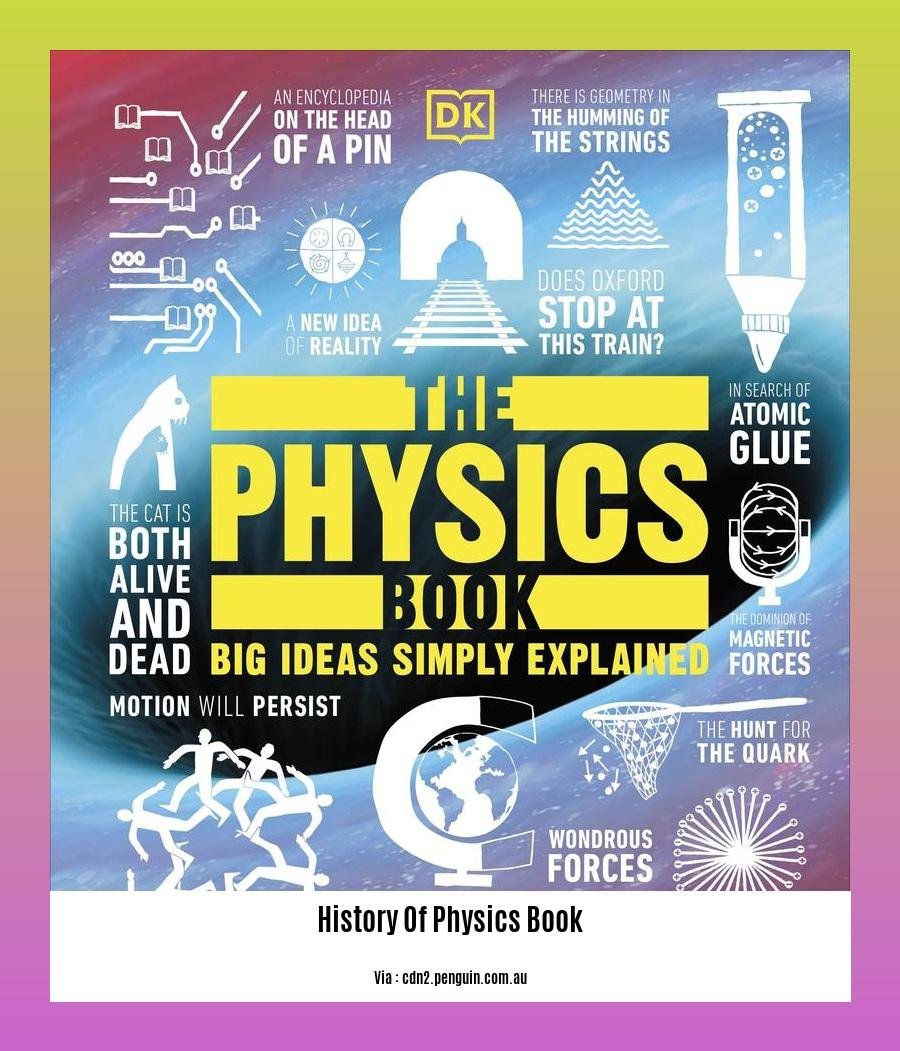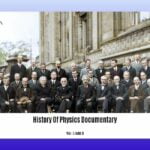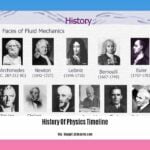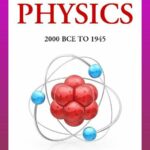Prepare to embark on an extraordinary journey through time as we explore [- The History of Physics Book: Unraveling the Universe’s Secrets from Antiquity to the Quantum Age]. Join us as we trace the evolution of physics from its humble beginnings in ancient civilizations to the groundbreaking discoveries that have shaped our modern understanding of the universe.
Key Takeaways:
The Springer book series “History of Physics” publishes scholarly yet accessible books on all aspects of physics history.
The series covers the evolution of ideas, techniques, pioneers, institutional history, and the interactions between physics research and society.
The Oxford Handbook of the History of Physics traces the history of physics from the 17th century to the present, including major advances in the field.
The book series and handbook provide comprehensive and engaging resources for anyone interested in the history of physics.
Links to the Springer book series and Oxford Handbook of the History of Physics are included for further exploration.
History Of Physics Book
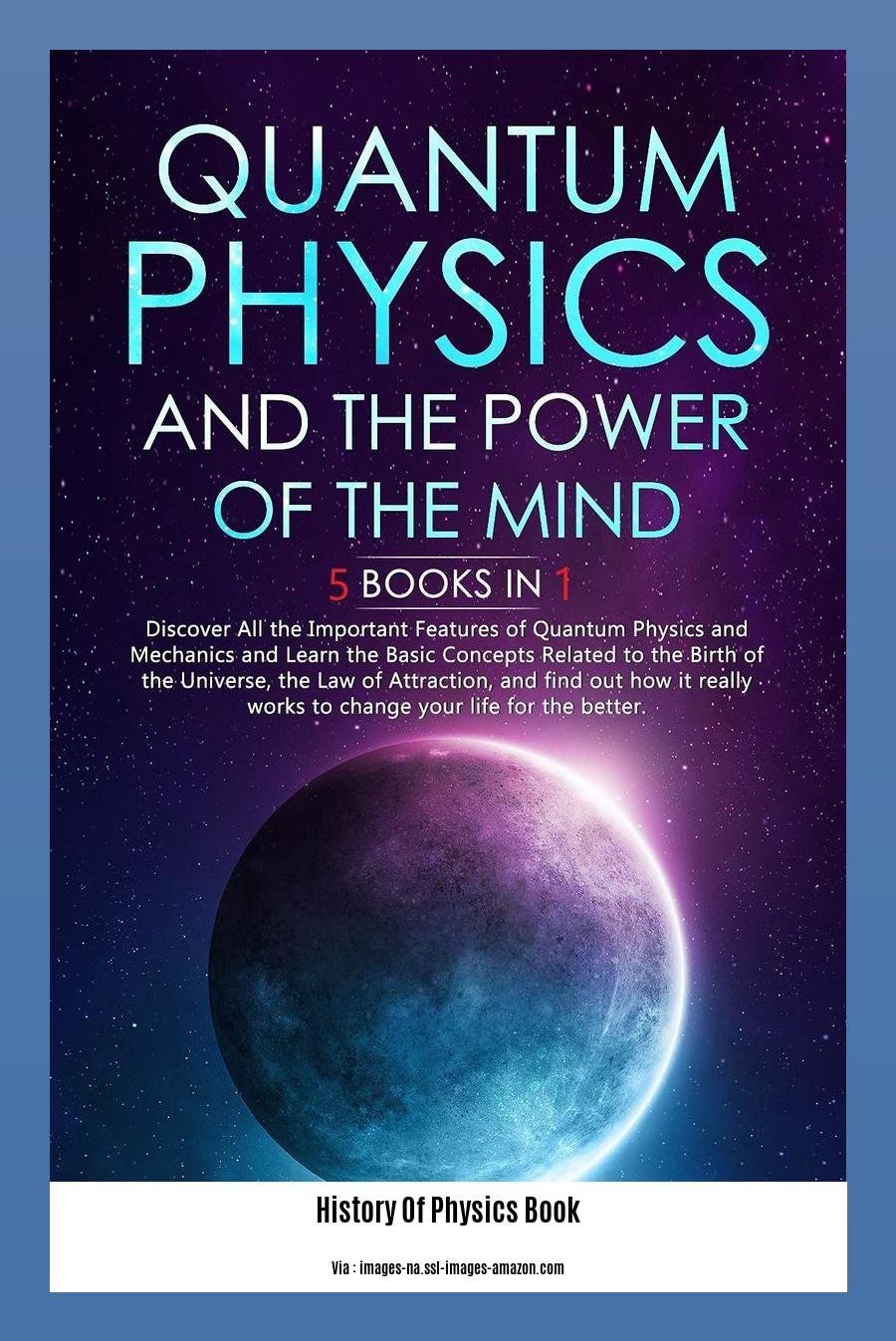
Journey Through Time to Unravel the Cosmos’ Secrets
From the ancient inquiries of Greek philosophers to the groundbreaking theories of modern physicists, the History Of Physics Book embarks on a captivating voyage through time, revealing the profound secrets of the universe. This awe-inspiring narrative unravels the tapestry of scientific exploration, where brilliant minds have illuminated our understanding of the cosmos, forever shaping our perception of reality.
H3. Unveiling the Cosmos’ Enigma
The History Of Physics Book delves into the heart of physics, exploring the fundamental principles that govern the universe. It traces the evolution of scientific thought, from the early speculations of ancient philosophers to the groundbreaking theories of modern physicists. Through its pages, we witness the birth of revolutionary ideas, the clash of opposing viewpoints, and the gradual unveiling of the universe’s hidden truths.
H3. Pioneers of Discovery: The Architects of Physics
The History Of Physics Book pays homage to the extraordinary individuals who have shaped the field of physics. From Galileo’s observations of celestial bodies to Newton’s laws of motion, from Einstein’s theory of relativity to Hawking’s exploration of black holes, we encounter the towering intellects whose brilliance has illuminated the mysteries of the cosmos. Their stories of perseverance, ingenuity, and unwavering dedication serve as an inspiration to aspiring scientists and enthusiasts alike.
H3. The Pillars of Physics: Cornerstones of Scientific Understanding
The History Of Physics Book delves into the fundamental pillars of physics, the cornerstone theories that have revolutionized our comprehension of the universe. Quantum mechanics, with its enigmatic world of subatomic particles, unveils the strange and wondrous properties of matter at its most fundamental level. Relativity theory, with its mind-bending concepts of space, time, and gravity, challenges our notions of reality and opens up new vistas of cosmological exploration.
H3. A Tapestry of Applications: Physics Shaping Our World
The History Of Physics Book explores the profound impact of physics on our daily lives. From the technologies that power our homes to the medical advancements that save lives, from the communication networks that connect us to the marvels of space exploration, we witness the tangible benefits of physics research. It is a testament to the transformative power of scientific inquiry, demonstrating how physics has shaped our world in countless ways.
H3. Embark on Your Own Journey of Discovery
The History Of Physics Book beckons readers of all backgrounds to embark on an extraordinary journey of discovery. Whether you’re a seasoned physicist seeking to deepen your understanding or a curious mind eager to explore the wonders of the universe, this book is your gateway to unlocking the secrets of the cosmos. With its captivating narrative, illuminating insights, and inspiring stories of scientific achievement, the History Of Physics Book is an indispensable resource for anyone fascinated by the nature of reality.
Unearth the captivating journey of physics through the ages with our comprehensive history of physics article, tracing the evolution of scientific thought that shaped our understanding of the universe. Dive into the History Of Physics Timeline to explore pivotal moments and discoveries that transformed our perception of the world. Enrich your knowledge with our engaging History Of Physics Documentary, a visual exploration of the minds and experiments that revolutionized science. Delve into the intricacies of physics with our History Of Physics Podcast, featuring expert insights and discussions on the latest advancements and theories shaping our understanding of the universe.
The Impact of Physics on Various Fields such as Technology, Medicine, and Philosophy
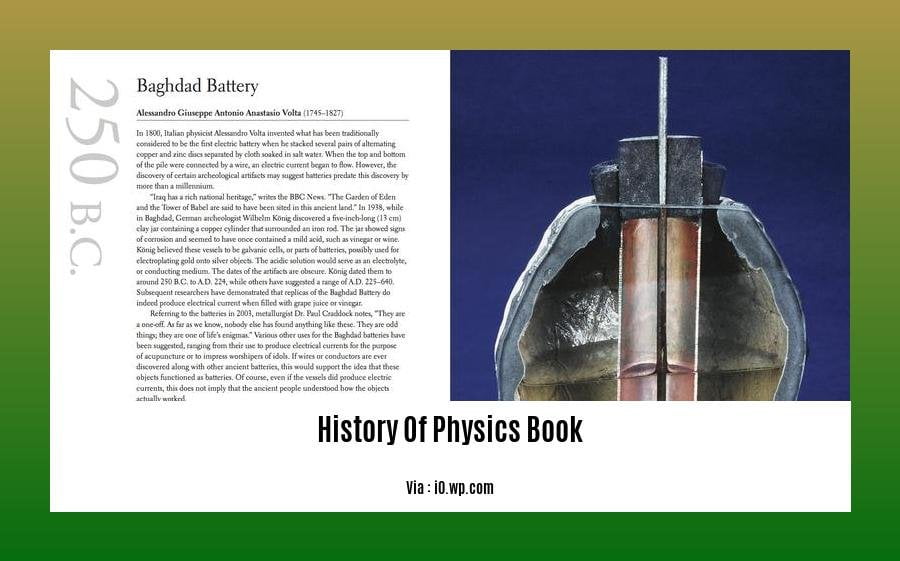
Key Takeaways:
- Physics in Medicine: Medical physics plays a pivotal role in preventing, diagnosing, and treating diseases.
- Medical Imaging: X-rays, Ultrasound, and MRI are widely used non-invasive imaging techniques in medicine.
- Physics in Technology: Physics principles are essential in developing groundbreaking technologies like lasers, transistors, and integrated circuits.
- Physics in Philosophy: Physics findings have challenged our understanding of reality and influenced philosophical thought.
Physics and Technology
From the humble light bulb to the colossal Large Hadron Collider, physics has been instrumental in shaping the technological landscape. Let’s dive into specific instances where physics has ignited innovation:
Lasers: The invention of lasers, based on the principles of stimulated emission, revolutionized various fields. From optical communications to medical applications, lasers have become indispensable tools.
Transistors: Miniaturization in electronics took a giant leap with the advent of transistors. These tiny switches, governed by semiconductor physics, form the foundation of modern computers and countless electronic devices.
Integrated Circuits: Integrated circuits (ICs) pack millions of transistors onto a single chip, enabling the compact and powerful electronic devices we rely on today. ICs are pivotal in smartphones, laptops, and countless other gadgets.
Physics and Medicine
Physics has had a profound impact on medicine, transforming healthcare practices and saving countless lives. Let’s delve into some key medical applications of physics:
Medical Imaging: Non-invasive imaging techniques like X-rays, ultrasound, and MRI provide valuable insights into the human body, aiding in diagnosis, treatment, and monitoring of diseases.
Radiation Therapy: The precise application of radiation, guided by physics principles, is a cornerstone of cancer treatment. Radiation therapy targets cancerous cells while minimizing harm to healthy tissues.
Nuclear Medicine: Radioactive isotopes, harnessed through nuclear physics, are used in medical imaging and treatment. For example, PET scans utilize radioactive tracers to detect metabolic changes associated with diseases.
Physics and Philosophy
Physics findings have challenged our understanding of reality and sparked philosophical debates. Let’s explore some of these profound connections:
Quantum Mechanics: The mind-boggling world of quantum mechanics has forced us to question our notions of reality, causality, and determinism. It has sparked discussions on the nature of consciousness and the observer effect.
Relativity Theory: Einstein’s theory of relativity revolutionized our perception of space, time, and gravity. It led to philosophical discussions on the nature of simultaneity, the flow of time, and the relationship between space and time.
Conclusion
Physics is not just a collection of equations and theories; it’s a vibrant and dynamic field that continues to reshape our understanding of the universe and our place within it. Its impact on technology, medicine, and philosophy is undeniable, and it will undoubtedly continue to drive innovation and shape our future.
Sources:
- The Impact of Physics on Various Fields
- Physics in Medicine and Biology
Highlighting the role of experimentation, observation, and mathematical modeling in the development of physics.
Physics is not just abstract equations and complex theories; it’s a vibrant interplay of experimentation, observation, and mathematical modeling. These three pillars have shaped our understanding of the universe, from the smallest subatomic particles to the vast cosmic tapestry.
Experimentation:
Experimentation is the backbone of physics. It’s the process of testing hypotheses and theories through controlled observations and measurements. From Galileo dropping objects from the Leaning Tower of Pisa to the Large Hadron Collider smashing particles at near-light speeds, experiments have pushed the boundaries of our knowledge. They’ve validated theories, uncovered new phenomena, and challenged long-held beliefs.
Observation:
Observation is the art of carefully gathering data from the natural world. Whether it’s astronomers peering through telescopes to study distant galaxies or physicists using microscopes to explore the inner workings of atoms, observation provides the raw material for scientific inquiry. It’s the foundation upon which theories are built and refined.
Mathematical Modeling:
Mathematical modeling is the language of physics. It’s the process of translating complex physical phenomena into mathematical equations and representations. These models allow us to simulate and predict the behavior of the universe, from the motion of planets to the interactions of subatomic particles. Mathematical modeling is a powerful tool that enables us to understand and manipulate the world around us.
Key Takeaways:
- Experimentation: Experiments are the cornerstone of physics, testing hypotheses and theories through controlled observations and measurements.
- Observation: Observing the natural world provides the raw material for scientific inquiry, forming the foundation for building and refining theories.
- Mathematical Modeling: Physics uses mathematical models to represent complex phenomena, allowing us to simulate, predict, and understand the behavior of the universe.
Sources:
- Modeling Roles of Mathematics in Physics: Epistemology and Ontology
- The Use of “Mathematical Modeling” in Physics: Case of the Double Pendulum
The Ongoing Quest for Knowledge and the Future Directions of Physics Research
In the realm of science, physics stands as a beacon of human curiosity, propelling us to unravel the enigmas of the universe. From the grandeur of celestial bodies to the intricacies of subatomic particles, the quest for knowledge in physics continues to drive advancements that reshape our understanding of reality. In this ongoing odyssey, we explore the future directions of physics research, where bold ideas and groundbreaking discoveries await.
Key Takeaways:
- The quest for knowledge in physics is a continuous journey, driven by human curiosity and the desire to understand the universe.
- Future research directions in physics encompass a wide spectrum of areas, including quantum mechanics, cosmology, particle physics, and condensed matter physics.
- The pursuit of knowledge in physics has led to transformative technologies that have revolutionized various aspects of human life.
- Collaboration, interdisciplinary approaches, and the integration of advanced computational and experimental techniques are crucial for future progress in physics.
Quantum Mechanics: Uncharted Frontiers of the Microscopic World
Venturing into the realm of quantum mechanics, physicists seek to unveil the enigmatic behaviors of matter and energy at the atomic and subatomic levels. Quantum entanglement, superposition, and the wave-particle duality of matter continue to challenge our classical notions of reality. As we delve deeper into this mysterious domain, we may uncover the key to unlocking new technologies such as quantum computing and secure communication systems.
Cosmology: Unveiling the Origins and Fate of the Universe
The vast expanse of the universe holds secrets that beckon physicists to explore the very fabric of spacetime. Cosmology seeks to answer profound questions about the origin, evolution, and ultimate fate of the universe. Through observations of distant galaxies and cosmic microwave background radiation, scientists strive to unravel the mysteries of dark matter, dark energy, and the enigmatic expansion of the universe.
Particle Physics: Probing the Fundamental Building Blocks of Matter
Delving into the heart of matter, particle physics aims to uncover the fundamental constituents of the universe. Experiments conducted at colossal particle accelerators, such as the Large Hadron Collider, provide glimpses into the realm of elementary particles. By studying the interactions and properties of these particles, physicists hope to unify the forces of nature and gain a deeper understanding of the universe’s fundamental laws.
Condensed Matter Physics: Exploring the Macroscopic Manifestations of Microscopic Interactions
In the realm of condensed matter physics, scientists probe the behavior of materials at the atomic and molecular levels. This field encompasses a vast array of phenomena, including superconductivity, magnetism, and superfluidity. By unraveling the fundamental principles governing these properties, researchers aim to develop novel materials with tailored properties for applications in electronics, energy storage, and quantum technologies.
The Convergence of Disciplines: Fostering Interdisciplinary Synergies
The future of physics research lies not only in specialized fields but also in the convergence of disciplines. Interdisciplinary collaborations between physics, mathematics, computer science, and engineering are paving the way for groundbreaking discoveries. The integration of advanced computational techniques, such as machine learning and artificial intelligence, is accelerating the analysis and interpretation of vast experimental data sets.
The Role of Technology in Advancing Physics Research
Technological advancements play a pivotal role in推动physics research forward. The development of innovative experimental apparatus, such as ultra-sensitive detectors and high-powered lasers, enables physicists to probe the universe with unprecedented precision. Additionally, the advent of supercomputers and quantum computers provides the computational horsepower necessary to simulate complex physical systems and tackle intractable problems.
Conclusion: Unraveling the Mysteries of the Universe
The quest for knowledge in physics is an ongoing endeavor, driven by human curiosity and the desire to unravel the mysteries of the universe. As we delve deeper into the realms of quantum mechanics, cosmology, particle physics, and condensed matter physics, we stand at the threshold of transformative discoveries that have the potential to reshape our understanding of reality and revolutionize various aspects of our lives.
Sources:
- The Guardian: What are the biggest unanswered questions in physics?
- Scientific American: The Future of Physics
FAQ
Q1: What topics does the “History of Physics Book” series cover?
A1: The “History of Physics Book” series delves into the historical evolution of physics, encompassing key advancements, theories, and breakthroughs. It explores pioneers’ contributions, institutional histories, and the intricate relationship between physics research and societal developments.
Q2: What time period does the “Oxford Handbook of the History of Physics” cover?
A2: The “Oxford Handbook of the History of Physics” traces the history of physics from the 17th century to the present day, providing a comprehensive overview of major achievements and developments in the field.
Q3: What are the different subcategories of medical physics discussed in the article?
A3: Medical physics encompasses various subspecialties, including medical imaging physics, radiation oncology physics, non-ionizing medical radiation physics, and nuclear medicine physics, each focusing on distinct applications of physics in healthcare.
Q4: How do X-ray and CT scans differ in medical imaging?
A4: X-rays generate planar images by transmitting signals through the affected area, while CT scans involve multiple scanning passes and digital stacking to create cross-sectional images, providing more detailed anatomical information.
Q5: Which imaging technique utilizes high-frequency sound waves?
A5: Ultrasound is a non-invasive imaging modality that employs high-frequency sound waves to generate real-time images of tissues and organs, enabling dynamic visualization and evaluation.
